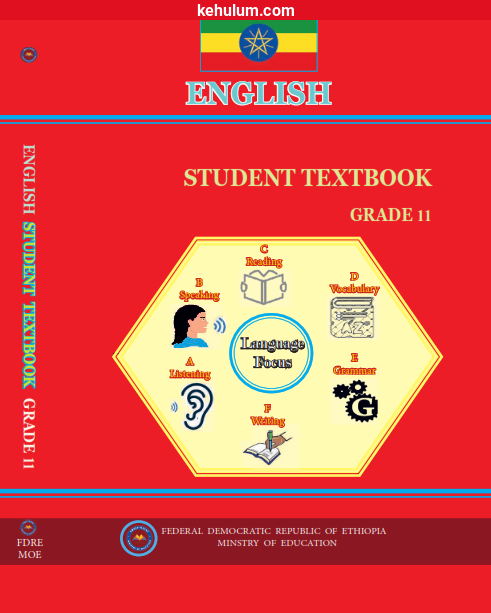The New Curriculum grade 11 Agriculture Student Textbook contains 16 units, they are:
- Unit 1: Introduction to Crop Production
- Unit 2: Field Crops Production and Management
- Unit 3: Industrial Crops Production and Management
- Unit 4: Introduction to Farm Animals
- Unit 5: Animal Feeds and Feeding Practices
- Unit 6: Animal Genetics and Breeding Practices
- Unit 7: Farm Animals Housing
- Unit 8: Basic Animal Health and Disease Control
- Unit 9: Dairy Cattle Production and Management
- Unit 10: Introduction to Natural Resources
- Unit 11: Management of Natural Resources
- Unit 12: Concepts of Biodiversity
- Unit 13: Climate Change Adaptation and Mitigation
- Unit 14: Mechanized Farming
- Unit 15: Introduction to Human Nutrition
- Unit 16: Diversified Food Production and Consumption
Unit 1: Introduction to Crop Production
- Defines key terms like agriculture, shifting cultivation, and subsistence farming
- Discusses the origin and domestication of crop plants
- Provides an overview of the status of crop production in Ethiopia
Unit 2: Field Crops Production and Management
- Covers the production and management of cereal and pulse crops
Unit 3: Industrial Crops Production and Management
- Focuses on the production and management of oil, fiber, and sugar crops
Unit 4: Introduction to Farm Animals
- Discusses farm animal species, their importance, and constraints in animal production
Unit 5: Animal Feeds and Feeding Practices
- Covers feed resources, nutrient requirements, and feed formulation practices
Unit 6: Animal Genetics and Breeding Practices
- Introduces animal genetics, breed improvement methods, and reproductive technologies
Unit 7: Farm Animals Housing
- Discusses the significance, types, and guidelines for farm animal housing
Unit 8: Basic Animal Health and Disease Control
- Covers major diseases, parasites, and prevention/control measures for farm animals
Unit 9: Dairy Cattle Production and Management
- Provides an in-depth look at dairy cattle breeds, feeding, housing, and diseases
Unit 10: Introduction to Natural Resources
- Defines natural resources and discusses their major types
- Explores the causes and consequences of natural resource degradation
Unit 11: Management of Natural Resources
- Covers concepts of natural resource use and management practices for soil, water, forests, and the environment
- Highlights the role of indigenous knowledge in natural resource management
Unit 12: Concepts of Biodiversity
- Defines biodiversity and its scope, values, and services
- Examines threats to biodiversity and conservation efforts in Ethiopia
Unit 13: Climate Change Adaptation and Mitigation
- Defines climate change and its effects
- Outlines climate change mitigation and adaptation strategies, including the use of indigenous knowledge
Unit 14: Mechanized Farming
- Introduces mechanized farming, types of farm tools and equipment, and their uses
Unit 15: Introduction to Human Nutrition
- Defines basic nutrition terms and concepts, nutrient functions, and food groups
- Explores food and nutrition security, malnutrition, and the agriculture-nutrition linkage
Unit 16: Diversified Food Production and Consumption
- Emphasizes the importance of diversified food production and dietary diversification strategies
- Highlights nutrient enrichment strategies and the role of indigenous knowledge in nutrition-sensitive agriculture
















